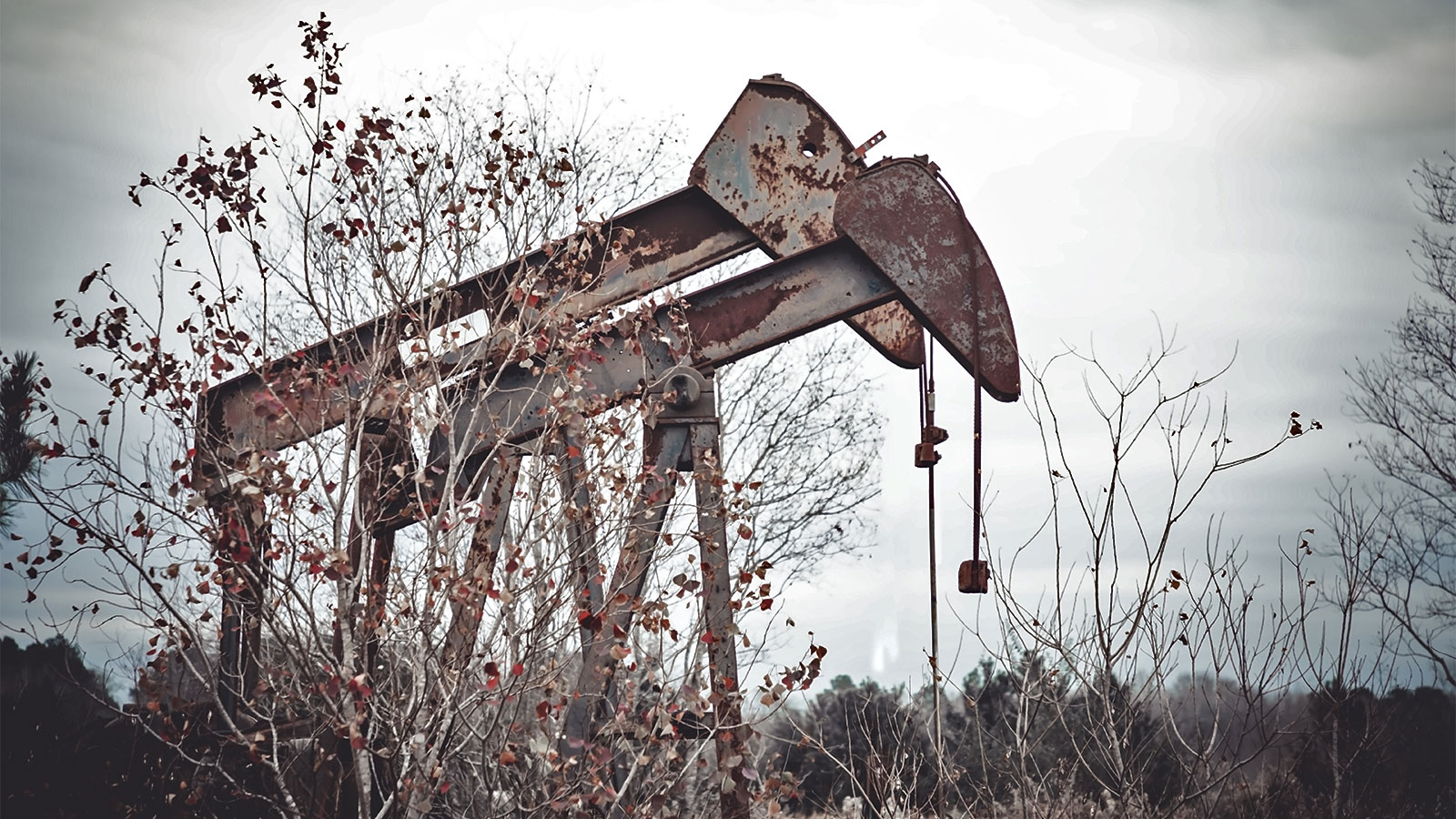When Weatherly Oil and Gas filed for bankruptcy in February 2019, the company was walking away from several hundred Texas wells. Many hadn’t produced a drop of oil in years. Companies are legally required to “plug” wells that they’re no longer using to extract oil and gas by pouring concrete into all their openings and cracks; this prevents them from leaking fossil fuels or harmful pollutants into the air and water sources nearby. But many companies that abandon wells say they no longer have the financial means to do so, leaving government regulators on the hook for the cost. The problem is massive: There are approximately 2.1 million unplugged abandoned wells across the country.
The Texas Railroad Commission, or RRC, which oversees the state’s oil and gas industry, tried to make sure Weatherly would pay up, objecting to the state’s bankruptcy plan because it didn’t include sufficient information about the amount of money that would be set aside for well cleanup and for the company’s various creditors. Ultimately, Weatherly struck a deal with the agency: The company would pay the Commission $3.5 million to cover the plugging costs of the abandoned wells that it couldn’t find buyers for. The agency agreed, and the bankruptcy court approved the deal. When Weatherly handed over 173 abandoned wells to the state, it officially became the company responsible for the most orphan wells in Texas.
Unfortunately, the $3.5 million that the RRC was able to squeeze out of Weatherly doesn’t even cover a third of the $13.3 million estimated cleanup cost. Effectively, the state is now responsible for coming up with almost all of the $10 million shortfall.
Though Weatherly insisted it couldn’t find the money to fulfill its plugging obligations, the company’s top executives were paid a combined $8.6 million in the year preceding bankruptcy. Weatherly’s former CEO later became a paid bankruptcy expert for FTI Consulting, a public-relations firm with a record of launching duplicitous front groups for oil companies. (The company’s former executives did not immediately respond to requests for comment.)
It’s a stark example of the way that environmental liabilities are going unaddressed when companies go belly up, according to a report released Tuesday by the new nonprofit group Commission Shift, which advocates for reform of oil and gas regulation in Texas. The Lone Star State currently has more than 6,000 orphan wells on government rolls, and the RRC estimates they will cost more than $300 million to clean up. The report lays the blame on a number of the state’s regulatory policies, including waiving plugging requirements during the pandemic, infrequent and small-dollar penalties, and low financial assurance requirements from companies. The volatility of the oil market hasn’t helped: Price fluctuations and a long-term market slump caused a spike in bankruptcies in 2019, and sagging demand due to the pandemic accelerated the pace. Last year alone, 31 companies worth more than $50 billion filed for bankruptcy in Texas, bringing with them a wave of well abandonments.
“The Railroad Commission doesn’t have the proper systems in place to recover fees from the industry for plugging wells,” said Virginia Palacios, Commission Shift’s executive director. “Taxpayers are going to be on the hook for plugging those wells.”
To try to prevent this, the RRC collects financial assurances called bonds from oil companies before they begin to operate in the state. The bond value depends on how many wells the company has. Companies like Weatherly that operate 100 or more wells are required to submit a $250,000 bond — approximately $2,500 per well. But, since a typical abandoned well costs between $20,000 and $40,000 to plug and clean up, these bonds often cover only a fraction of a given company’s plugging costs if it ends up abandoning a large number of wells.
“It’s just nowhere near the amount of money you need to actually cover what operators could be leaving behind,” said Palacios. “The Railroad Commission needs to enforce better practices upfront so that we can avoid the bankruptcy process and the orphan law process altogether.”
The RRC did not respond to a request for comment in time for publication.
Plugging costs are rising: Over the last decade, state data show that cleanup costs have increased anywhere between 30 and 300 percent in various parts of the state. In the RRC’s district 8, which oversees the Permian Basin — the largest and most productive shale play in Texas — per-foot plugging costs were less than $9 in 2010. By 2020, they had doubled.
Environmental advocates say that cleanup costs are poised to surge even more as newer fracking wells, which are drilled deeper and often involve long horizontal bores, are abandoned. The average well depth in the Permian is approximately 15,000 feet. An analysis of Texas data by Kelly Mitchell, a senior analyst with the corporate watchdog group Documented, found that the average well plugged by the RRC between 2015 and 2020 was only 2,231 feet deep. A separate report published last year by Carbon Tracker, a climate-focused financial think tank, estimated that it could cost as much as $300,000 to plug a 10,000-foot modern shale well.
Palacios said that, as more companies file for bankruptcy and signs point to the oil and gas industry shrinking in Texas, the need for effective oversight by the RRC is becoming more urgent. Her organization hopes to push the RRC toward policies that better protect taxpayers and the environment. Aside from the orphan wells issue, Commission Shift will target campaign finance and ethics reforms at the RRC, she said.
“RRC is going through an energy transition,” said Palacios. “We need our state agencies to not keep their heads in the sand on this and to start managing how that transition happens.”




